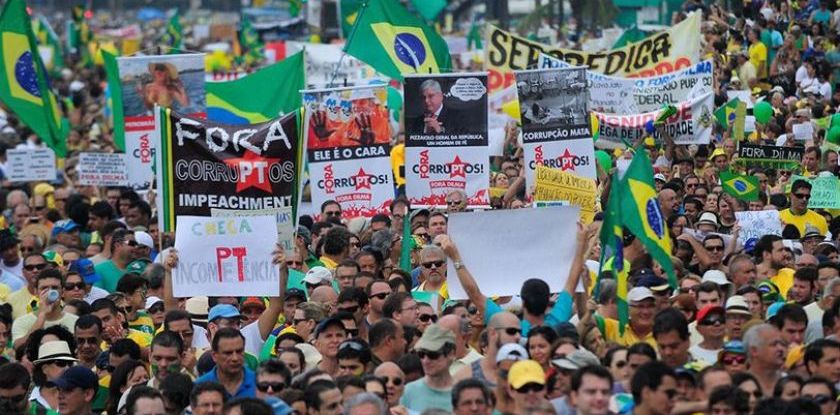Second attempt of transferring to democratic system in Brazil proved successful. However, it is hard to call it finished, considering political history of the country in the last two years, when as a result of impeachment Dilma Rousseff was removed from power due to corruption scandal. According to latest polls Brazilians aren’t opposed to repeating the experience of 190s, in order to finally defeat corruption in the country.
Here you can read the first article on the transit of Brazil to democracy.
A slew of dictators and coups
A coup accomplished using the forces of the top generals of Brazilian joint staff in 1964 lead to creation of firm dictatorship. General Humberto Castelo Branco came to power. This was the third dictatorship in the history of Brazil (existed until 1985), but nonetheless it largely differed from authoritarian regimes of populist variety.
Unlike many other Latin American regimes, Brazilian generals didn’t get rid of formal institutes of representative system, preserving the parliament and even two political parties. The first one (ARENA) represented the ruling elite, and the second one “Brazilian democratic movement” played the role of opposition. Those who gave permission to participate in political game, were included in the movement. Those who didn’t fit into the system were persecuted.
Being fervent anti-communists, Brazilian generals nonetheless, copied all of the systemic characteristics of the Soviet system in its post-war form, which gained popularity in the countries of Eastern Europe. And striking resemblance of the systems doesn’t end there. As declassified documents of CIA show, analysts of this organization sincerely justified harsh actions of the military with the threat of communism. In that sense they were no different from their Moscow colleagues. The latter saw a possibility of counter-revolutionary revolt behind any civil initiative.
Real political struggle unfolded within the military cohort itself, taking violent forms. Thus, Castelo Branco, active participants of the coup of 1964, who assumed the office of the president, turned out too liberal for the new regime, since he thought there was a need to hurry with the return of power to civilian.
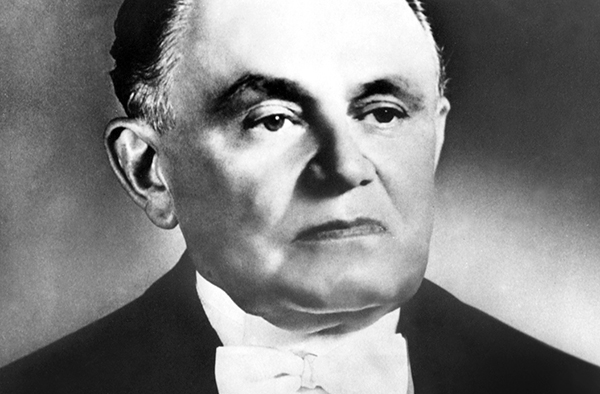
In the early 1967, after passing of the new constitution cancelling popular elections and replacing them with parliament ones, he ended up outside of politics, and in July of the same year died in car accident.
Next dictator, Artur da Costa e Silva was extremely cruel and was remembered by Brazilians for creating battalions of death for dealing with tramps and the homeless.
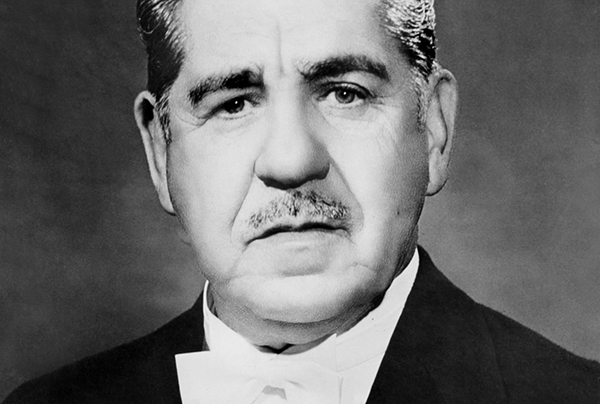
But in two years he had a stroke, and the power was overtaken by triarchy of generals that was dubbed “second junta”.
Next military president Emilio Medici occupied his post for five years – an eternity compared to a slew of his predecessors – both authoritarian and democratic ones.
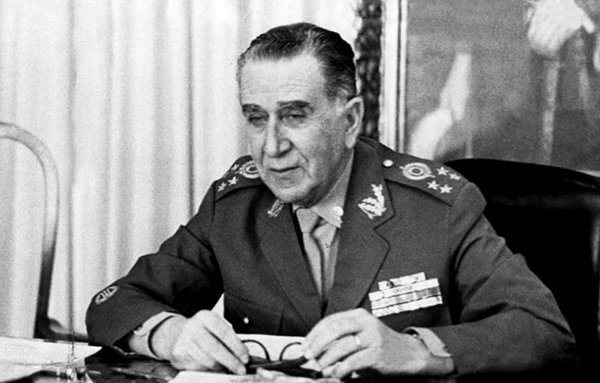
From Wikipedia; Medici, after graduating from military academy, occupied various positions on the army. In 1964 he participated in the government coup, as a result of which the government of Juan Goulart was deposed. From 1969 until 1974 Medici occupied the position of the president of Brazil. His government conducted purges against the democratic movement. In the period of his presidency in 1972 an amendment was made to constitution that introduced death penalty for anti-governmental activity. Medici tried to expand the social base of the regime by having working class enter the governmental-monopolistic structure (plan for social integration) and by forming of farmer class of the population (land statute).
Generals of industrial mines
A military dictatorship had its own mission – to secure unprecedented rates of growth of the economy, by creating national industrial base. Rates of growth of national economy in the second half of 1960s early 1970s comprised around 10% a year, which looked like an amazing success.
It is hard to point out the dictator component in these rates of growth, since in the period of instability and populism, national economy didn’t stand still either. The essential difference of the “new” economic model was its orientation towards exporting of industrial goods. Satisfying of domestic demands was an important but secondary goal.
This approach showed itself in regional politics as well. Main beneficiary of economic strategy of the military, according to CIA analysts was the state of Sao Paulo, it was here that main growth areas were concentrated, which were developed by the military dictatorship. In other words, the period of dictatorship could be identified as the victory of this macro-region over its competitors.
From Wikipedia: Sao Paulo – is the most populated and economically developed state of Brazil, situated in the south-east of the country. Administrative center is the city of Sao Paulo, which is also the largest city of Brazil and all of South America. Sao Paulo in Portuguese means Saint Paul. The state produces around the third of Brazilian GNP – around $255 bil. Leading branches in the economy of the state are machine, auto and aviation industry, service and financial activity, trade, textile industry, food industry (citrus production, sugar, coffee).
High rates of economic growth of the country were nourished through the growth of debt burden, which unlike the fruits of growth, fell on the entire financial system of the country. By the early 1980s overall debt burden of Brazil was unexpectedly high for a developing nation and reached $90 bil. Another side of constant flow of loans is high inflation rates, which never fell below two digits numbers.
But much more important for brewing of real changes in Brazil towards democracy was understanding that harsh administrative system, able to mobilize colossal resources for solving of strategic goals, couldn’t create inner engines of independent growth. In a hyper-centralized system there wasn’t enough space for initiatives unsanctioned from above.
The argument of “total corruption”, that junta “sold” to society, upon its arrival to power in 1964 has also lost popularity. Political corruption has essentially dissapeared together with politics. However, the thesis that military people don’t take bribes hasn’t passed the test of time. System (as in USSR) gradually softened, and together with it norms of behavior of the general elite softened as well.
Abertura. Brazilian-style perestroika
The process of gradual liberalization of the regime has started already in the second half of 1970s – during the times of rapid economic growth. “Chosen” in 1974 president general Ernesto Geisel was aiming for gradual liberalization of the regime.
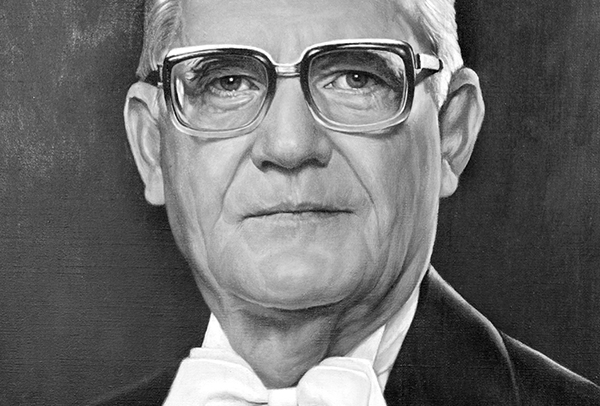
Even the appointed opposition was revived. Representatives from Democratic movement started to not only participate but even win at important political elections. This process was dubbed Abertura, which in Portuguese means democratization.
It went slowly, with a lot of difficulty and faced harsh resistance. In 1977 Geisel even had to halt the work of Congress (country’s parliament) in order to bypass the pressure of conservatives during the nomination of a successor to presidential post. But overall Abertura turned out to be pretty sustainable.
From Wikipedia: Ernesto Geisel was nominated as the candidate for presidency in 1973. At the time, Brazilian president was chosen by the military and the approved by the Congress, in order to create an impression of free elections. Geisel was chosen with an overwhelming majority of votes and assumed his position on March 15 1974. During his rule Brazil started a process of liberalization of the regime, which was strengthened under pressure from the people, demanding a return of democracy. In 1978 Geisel appointed Joao Figueiredo as his successor and resigned on march 15 1979.
New general-president Figueiredo continued Geisel’s work and declared political amnesty for all political crimes, committed after 1964. Political prisoners were released from jails. All political emigrants were allowed to return to the country; and the press and TV were rid of censure.
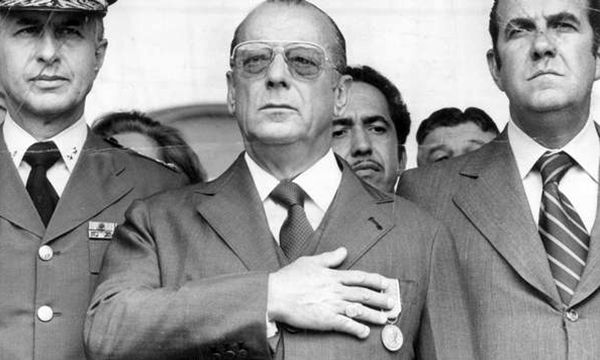
From Wikipedia: Joao Baptisto de Oliveira Figueiredo graduated from a number of higher military schools in Brazil, and rose up to the rank of a general in the army. In the government of Emilio Medici – he was the head of military secretariat of the president, in the government of Ernesto Geisel – the head of national intelligence service. He assumed the office of the president of march 15 1979. 1979 in Brazil was marked by the cancellation of a two-party system which was replaced by multi-party one. In 1982 for the first time in many years governors of Brazilian states were chosen by popular direct elections. In 1984 there multiple protests in Brazil in support return of the direct presidential elections. Figueiredo’s government didn’t go for such a bold move, however the will of the citizens did manifest itself: In January of 1985a college of electors chose Tacredo Neves a candidate from opposition coalition a new president of Brazil; thus a years-long period of military dictatorship has ended in Brazil.
A gradual evolution of dictatorship came to a boiling point in mid-1980s, when half-measures had to be replaced by ones that are more resolute. In 1984 on the eve of the first (in 20 years) elections of a civilian president, CIA has prepared a National Intelligence Estimate – an in-depth analysis of the situation in Brazil with an emphasis on revealing perspectives for development of the country.
At the time the transfer of power from the military to civilian government seemed inevitable to experts from the intelligence agency. Unexpected to CIA analysts was the layering of the worst economic crisis since the 1930s on top of the transit of power. As a result, military rulers ended up in a state of severe stress; they were forced to make strategic decisions under severe pressure of internal economic events.
Rates of economic growth became negative, as a result of which starting from early 1980s economy of the country shrunk by 8.5% which looked like a nightmare in the backdrop of a 16 year economic growth. In 1983 inflation went up to a 200% mark. Brazil was suffering from stagflation – the main issue of the time. High inflation rates didn’t lead to shrinking of unemployment. The percent of unemployed in the country made up 25%. In other words, not even a trace was left from Brazil’s economic miracle.
The debt problem had a serious geopolitical component. Around a quarter of all debt was from loans, provided by US banks, and by 1983 the sum of loan defaults for servicing of loans already made up hefty 2.6 bil USD. Fight with the problem of payment balance in Brazil led to decrease of US imports. Rise in economic status of the country led to higher independence of Brazilian military from economic and political support of the US.
Inside the country, military betted on technocrat ministers, but carried political responsibility for everything that was happening. According to CIA trust in the military has steadily fallen. President Figueiredo, who had very little in common with the dictators of 1960s and early 1970s (despite a mandatory military background) in the opinion of CIA analysts, turned out unable to cope with the development of the crisis and acted unpredictably.
Transit scenarios
Mechanisms of transit towards a full-fledged democracy were determined at the moment in Brazil by the principle of choosing of the future president. The order, established by the repressive constitution of 1967 assumed indirect procedure for choosing the head of the country. The main goal of this mechanism was to ensure military the right of veto.
Changing the constitutional order required two thirds of congress votes, the highest legislative body of Brazil. In their reports, CIA analysts assumed that the opposition that was already formed at the time, will not be able to achieve this, due to the fact that the military were simply not ready for such a democracy level – mainly due to fears of a leftist populist politician coming to power.
Authors of the report on perspectives of development of political system of Brazil came from a viewpoint that political opposition will be forced to agree with indirect elections, counting on the restoration of the system of civilian administration of the country.
The main problem of the power party in early 1980s, in CIA analysts’ opinion was weakness and indecisiveness of Figueiredo, who as a result was deprived of the possibility of appointing a successor for himself. The most likely candidate from the ruling power, in their opinion, was Paolo Maluf – deputy from the ruling PDS party, successful entrepreneur from Sao Paolo. This forecast didn’t come true, even though Maluf remains in the ranks of highest Brazilian politicians, representing the heiress of the party that was created by junta. But he never occupied any federal positions in the executive branch, and is currently in the Interpol wanted list, which bans him from travelling abroad.
As the most likely candidate for presidential post from opposition, CIA analysts viewed Tancredo Neves one of the leaders of the Democratic movement. He occupied the position of governor of Minas Gerais.
Authors of the report were convinced that despite an obvious strife with the military, all political candidates will lead the campaign on the economic front, the main direction of which will be the search for mechanisms of international aid, able to alleviate the burden of current debt. In the opinion of analysts in reality such help could only be organized by American banks. In other words, despite the result the winner would inevitably have to ask USA.
Authors of the report on the perspectives of development also forecasted an opportunity of social explosion in the country, but didn’t believe in the ability of protest wave to destroy capacity of the government to bring order and disrupt the elections. In analysts’ opinion, almost all influence groups in Brazil are interested in transfer of power to civilian administration. And what is especially important the military itself was interested in that, as they wanted to finally move the burden of ruling to civilian professionals. CIA probably knew about the latter desire firsthand – despite all of the criticism of the regime, American intelligence provided support on the operational level.
The factor determining peaceful attitude towards a tough economic situation was, in the opinion of the authors, the level of political culture, that formed in all social classes and groups of Brazil. Its main characteristic was low level of “political intensity”. As analysts clarify, they are talking about a high level of tolerance in society towards the mistakes of the regime and a lack of intentions to turn private desires and hopes into political demands.
Analysts, didn’t delve into explanations on how this level of “political tolerance” was reached. But, according to declassified documents, CIA clearly new of the operation Condor and the results of physical liquidation of opponents of the military regime. Thus, a high level of political conformism unlikely was a surprise to the authors of this analytical note of the CIA.
From Wikipedia: Operation Condor was a campaign on persecuting and destroying of political opposition (primarily communists and socialists) in a slew of South American countries in the 1970s and 1980s. It was conducted by dictator regimes of Chile, Argentina, Uruguay, Brazil, Paraguay, Bolivia. Intelligence services of these countries, acting in coordination, organized kidnappings, tortures and executions without trial and examination of representatives of the opposition including notorious “flights of death”. Victims were well-known diplomats and civic activists.
Nonetheless, authors of the report on perspectives of Brazil’s development allowed for an alternative scenario of transit. It assumed shifting to the order of the day an issue of direct popular elections, a result of which was a strengthened conflict between the military and opposition, as a result of which a space for national compromise quickly shrunk.
Another factor for inner political escalation could be outside economic circumstances. Growth of interest rates, difficulties with refinancing of the foreign debt also lowered the possibility of peaceful transit of power from military to civilian rule. But keeping in mind the fact that the real surviving opposition consisted of mostly far-left socialist groups, which in the 1980s had a very low goodwill among the public. This scenario looked inlikely.
A drastic bettering of relations between Brazil and the US that happened after Brazilian rulers took a course towards “reformation” in analysts’ opinion, spoke in favor of peaceful transit.
Fate of the successors
Military wasn’t able to hold on to power. Despite the non-democratic procedure of elections, in Jan, 1985 Tancredo Neves, governor of Minas Gerais, became the president.
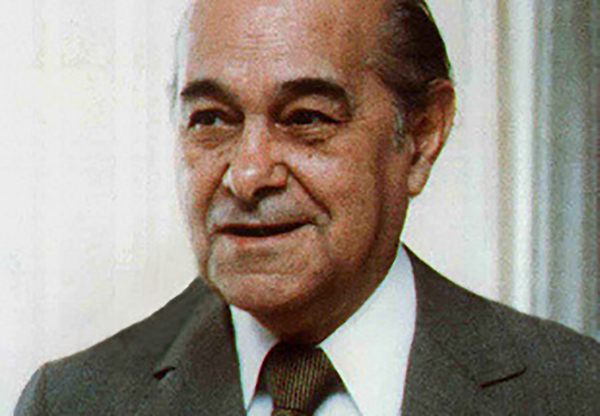
From Wikipedia: Tancredo de Almeida Neves was an attorney. From 1953-1954 he assumed the office of minister of justice in Vargas’s government. After resignation of Quadros and introduction of parliamentary republic, Neves assumed new to the country position of prime-minister (1961-1962). After establishment of military dictatorship in 1964 Neves sent off the toppled president Joao Goulart at the airport. In 1984 demostrations for direct president elections were held all over Brazil, and Neves was put forward as a candidate for presidency from the Party of liberal front and the Party of Brazilian democratic movement. On Jan. 15 1985 electoral college elected him as the head of the state. This became a significant event in the history of Brazil, since Neves became the first civilian president since 1964, being a candidate from the opposition coalition in the government and this ended military rule.
CIA analysts once again had to get to work. As a result, in April 1985 a new intelligence estimate was released titled “Perspectives of the regime”, in which main goals were outlined, that were facing the new president. The main one of those, according to authors was a search for consensus between major social groups that led Neves to power – labor unions, civilian politicians and small business.
Despite revolutionary circumstances of his rise to power, Neves was a public figure, who did politics for over 50 years. This circumstance, in authors opinion, played in favor of the new president – he was well-aware of the rules of Brazilian political game, the essence of which, in analysts’ opinion, amounted to searching for common ground and avoiding a conflict. Political capabilities of the president from opposition could turn against him, authors assumed, when he is forced to run the country.
There is a strange phrase in that analytical note: “If Neves dies before assuming his position, it will be occupied by vice-president Sarney. He will most likely be able to stay in power due to widespread support of the people and the military”. And this is exactly what happened in reality.
Neves wasn’t able to assume his position as a president due to an illness. On march 14 1985 a day before his inauguration, he was hospitalized with a sharp pain in the abdomen. In his place the next day vice president Sarney, who was supposed to carry out responsibilities of the president until Neves got better, took oath. But this wasn’t meant to happen: On April 21 Tancredo Neves died from diverticulitis, and Sarney official took office of the president of Brazil.
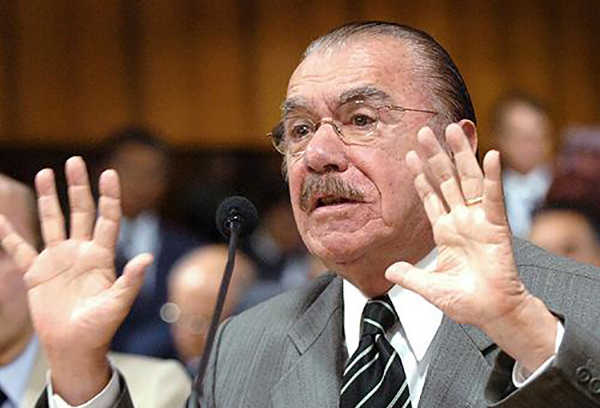
From Wikipedia: Jose Sarney, a writer and president of Brazil from 1985-1990, speaker of the senate in 1995-1997, 2003-2005 and from 2009.
“Strange” stipulation of CIA analysts has a quite a prosaic explanation. The report was prepared after Neves’s win and was presented to political administration of US after it was known that the winning candidate is terminal. It was decided to leave the report without changes, only adding new estimates to it; as a result it sounds like a conspiracy.
And nonetheless, untimely death of Neves after his win at the elections, but before assuming of office looks more than suspicious. During the military dictatorship, Sarney didn’t participate in the oppoisitonal movement, but was an activist from the ruling party ARENA,and in 1979 even headed it. Sarney left this party in 1984, after which arena made a choice in favor of Paolo Maluf as a candidate for presidential post. Then Sarney quickly created Liberal front – another opposition party. And then, already as a leader of that organization, he enter coalition with ‘Democratic movement’ – at the time the only legally allowed opposition party in Brazil, which was headed by Neves. Sarney agreed to the post of vice-president.
It is hard to brush off the thought that the whole story with Sarney’s exit from the ruling party, and taking of a presidential post – isn’t some sort of a combination in a devilish chess game. However, just as analysts thought it didn’t cause any problems in Brazilians political elite. Seems like after two decades of strange deaths of important politicians both opposition ones and those in power, nothing could faze Brazil to an extent where it would turn from its path.
CIA analysts were right in that Sarney will be able to stay in power, but didn’t guess with the terms. They assumed that if Sarney becomes president, he won’t be able to stay at this position full term, and new elections could already be held in 1986. The forecast didn’t come true; Sarney assumed the position until 1990 and his transit strategy was effective and decisive.
On July 11 1985 activity of ten political parties was legalized, including the communist party, and in November of the same year these parties could participate in the first free municipal elections in 20 years. Then a National founder meeting was summoned, which started creation of a new constitution. The main law was passed on October 5 1988. It is still active today. Next president of the country was already selected by national voting. Sarney didn’t run and today he is the only living ex-president, of those who ended in power via an old “military” law.
The lection in 2010 of Dilma Rousseff as a president was the best proof of the reality of changes in Brazil.
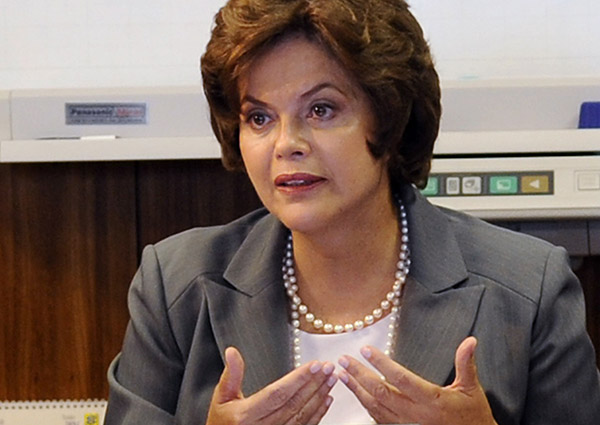
It is usually mentioned that she became the first female president in country’s history. But much more important is the fact that even in the times of military junta, Dilma was an active participant of underground movement of resistance, and in 1970 she stood in front of court martial. There is still a photo that was saved from that process and became legendary – a confident woman in front of menacing judges, who are trying to hide their faces. History showed that they had all the reasons to do so. Rousseff career however, became the victims of the same rules she was fighting against. A year ago she lsot her position as a result of impeachment, a procedure introduced in 1988 constitution.
From Wikipedia: Dilma Rousseff was born in Dec. 1947 in the family of Bulgarian immigrant Peter Rousseff. She became actively interested in politics after military coup of 1964. In 1967 she joined a youth organization Socialist party of Brazil and then its radical fraction Team of national liberation. IN 1970 Rousseff was arrested and in jail she was tortured with electric shock. She came out of jail in 1972. She then graduated from university and started legal political activity in the opposition political entities. For a long time she was a part of democratic workers party, and in the 1990s she switched to a radical laborer party. On June 21 2005 Dilma headed Administration of the president of Brazil, and in 2010 it was announced that she will be running for the first position in the country at the elections of October 2 2010. She also won at the next ones in 2014. However, on Aug. 31 2016 by the decision of Brazil’s senate she was removed from the position of president, due to corruption scandal.
Today sociological surveys conducted in Brazil on a regular basis show a sort of nostalgia of citizens for old times. But these surveys experts assume represent dissatisfaction with the corruption in the country, rather than real readiness of citizens to live in conditions of military dictatorship, which long remains a history.

